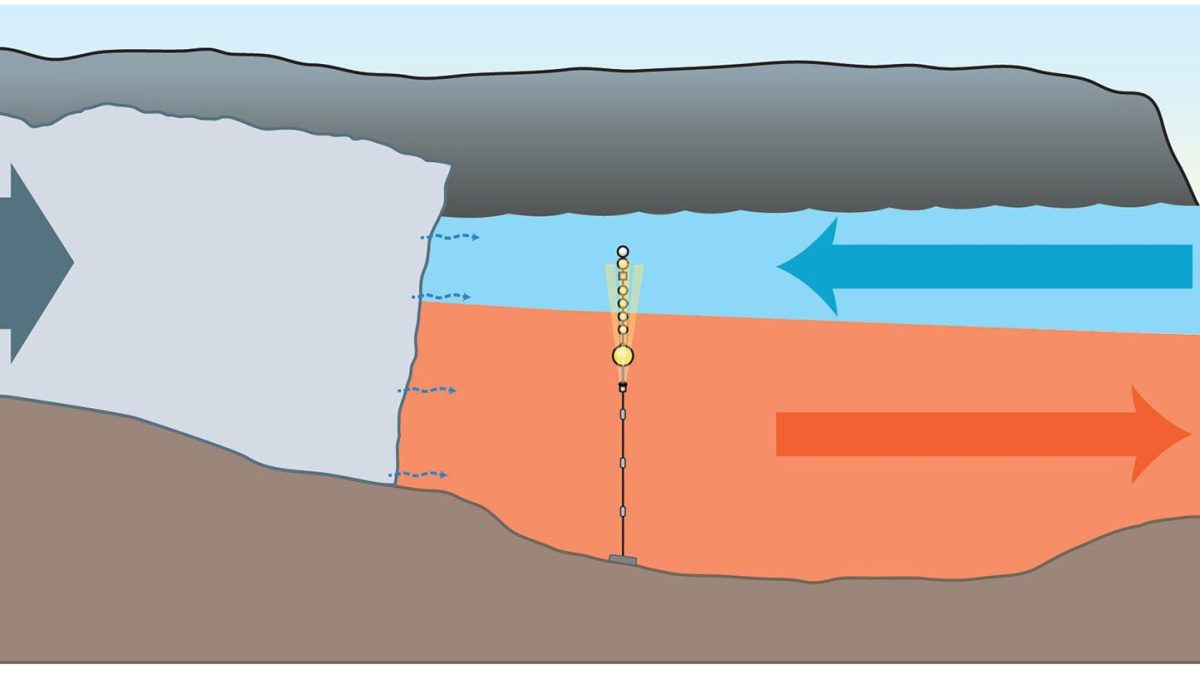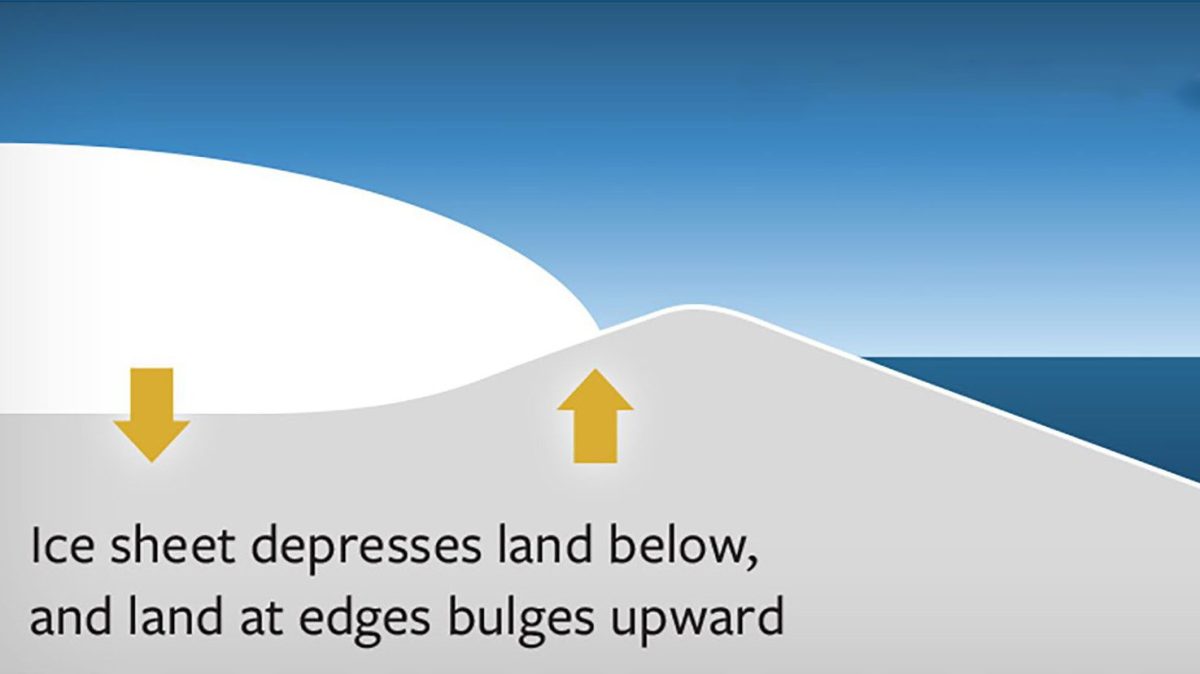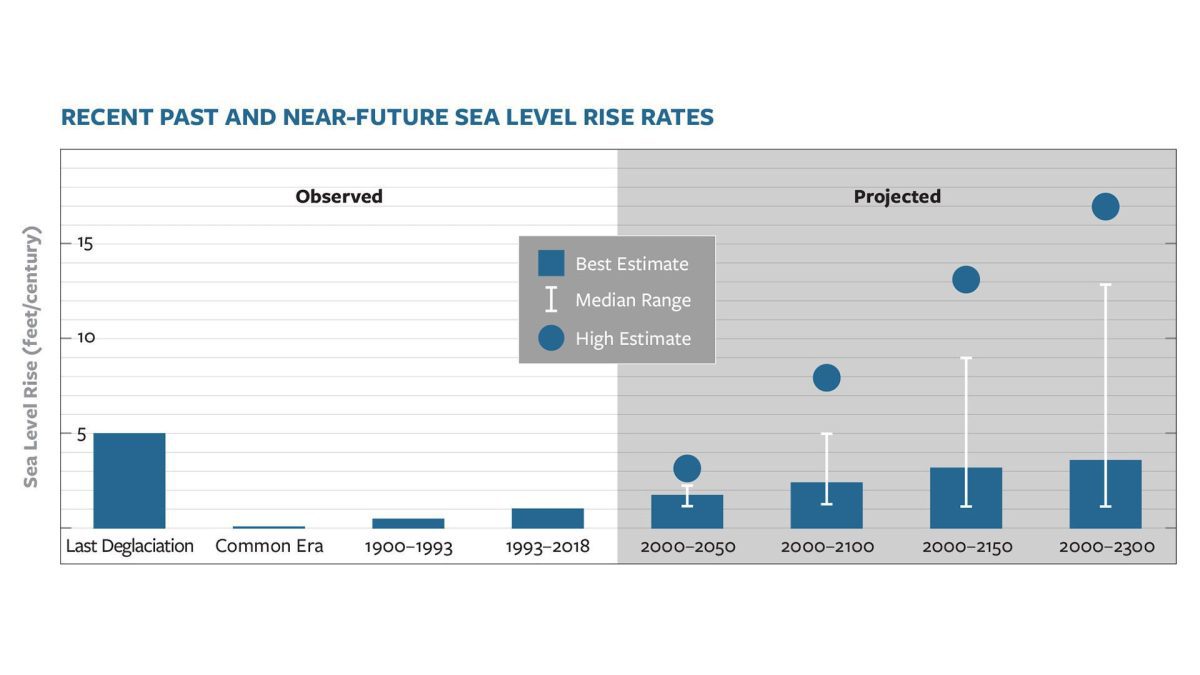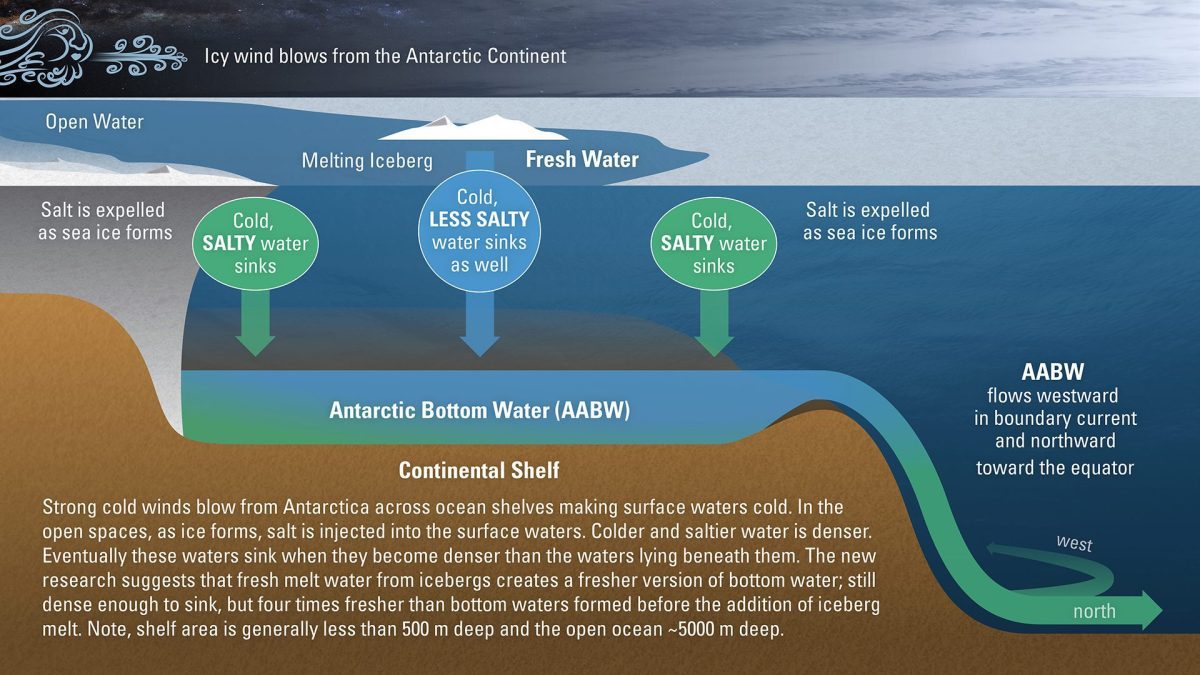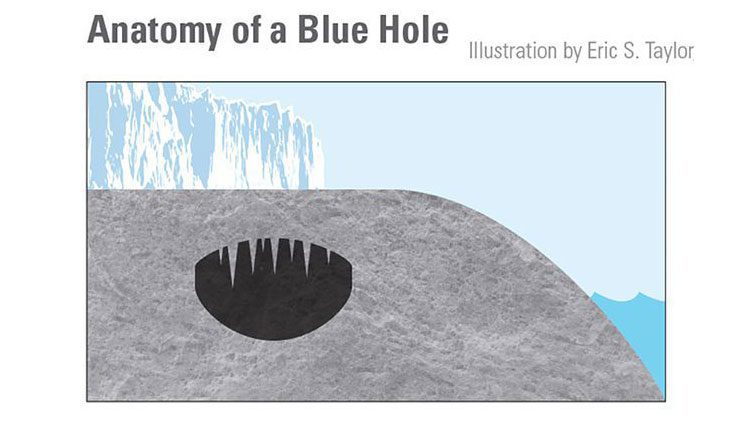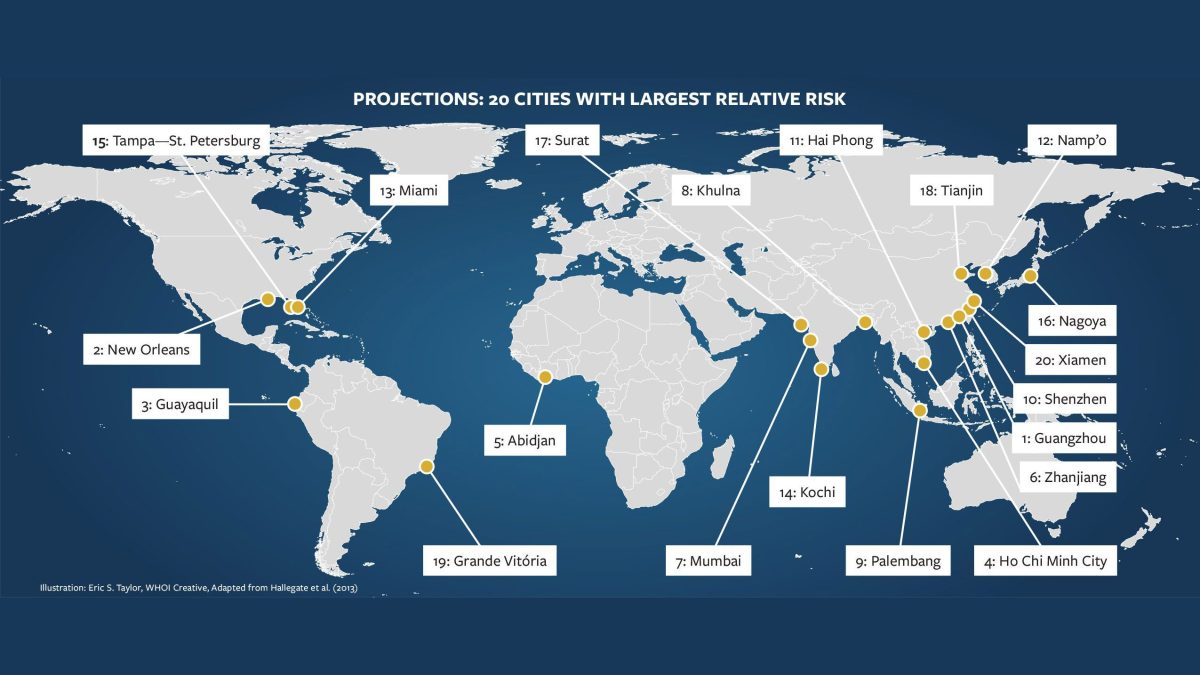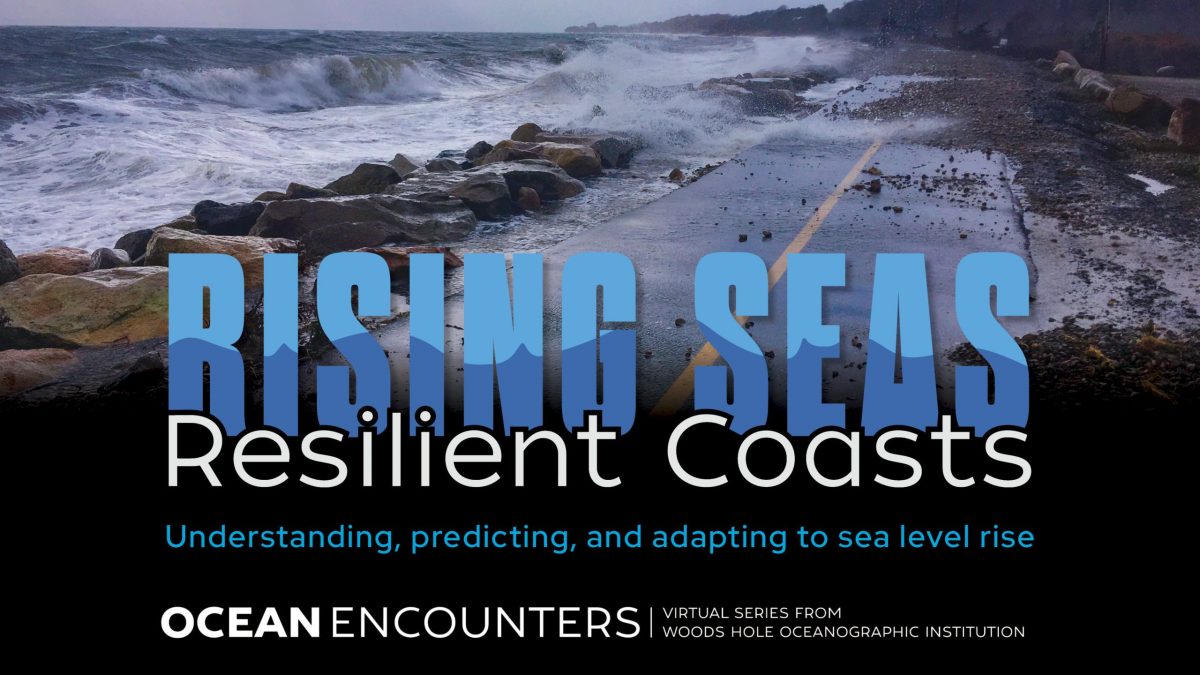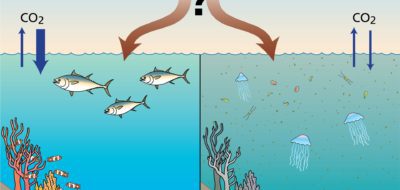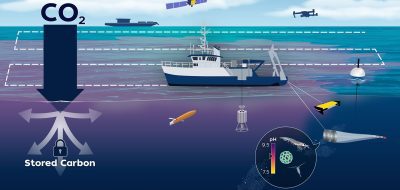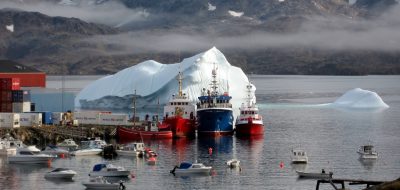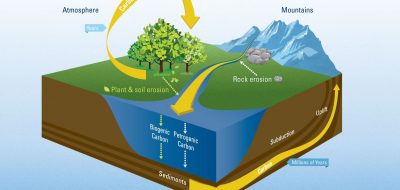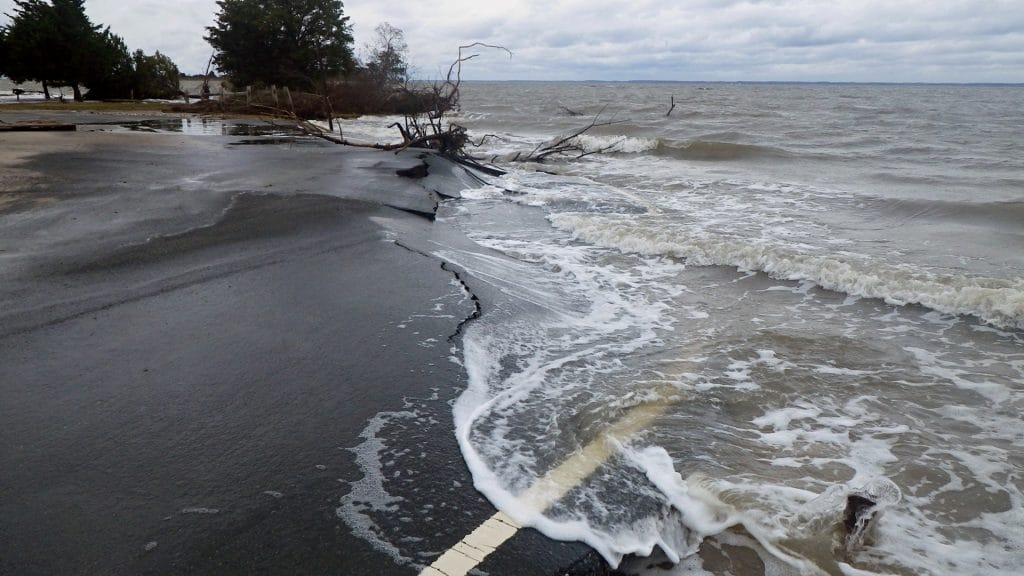
What is sea level rise?
Sea level rise is an increase in the ocean’s surface height relative to the land in a particular location.
The expansion of warm ocean water and melting polar ice are the primary causes of today’s rising sea levels. Both factors are the result of increasing human greenhouse gas emissions driving Earth’s temperatures higher.
If the planet surpasses 1.5–2°C of warming, irreversible impacts such as melting ice and sea level rise will significantly impact human and environmental sustainability.
What causes sea levels to rise?
Earth has warmed 1°C (2°F) since 1880. The ocean’s surface temperature rose about 1.5°F in that time because it absorbs more than 90 percent of the excess heat greenhouse gases trap in the atmosphere. Warmer water takes up more space, and this increase in volume—the thermal expansion of water—was sea level rise’s main culprit over the last century.
Meltwater from the world’s diminishing ice sheets and glaciers also drives sea levels up, and it is now the main contributor to global sea level rise. Hotter air temperatures melt the surface of the ice while warmer ocean water erodes ice shelves from the sides and below, allowing more ice and meltwater to flow into the sea.
The Greenland ice sheet, the world’s largest, is melting four times faster than it did in 2003 and is responsible for 20 percent of current sea level rise. The IPCC projects that by 2100, Greenland could contribute 3.1 to 10.6 inches (8 to 27 cm) to global sea level, and the melting of Antarctic ice may add another 1.2 to 11 inches (3 to 28 cm).
Another factor in rising sea levels is subsistence, when land sinks or settles due to natural geologic processes and human-made factors such as pumping water out of aquifers. The combined effects of coastal subsistence and rising seas worsen flooding and threaten densely-populated cities worldwide.
Land is gradually rising in some parts of the world due to processes like the long-term rebound of land after losing the weight of ancient ice sheets. In parts of Canada, for example, the land is rising several millimeters each year. Rebounding land can make sea levels appear to increase more slowly, but it doesn’t change or offset rising seas.
How do we know sea level is rising?
Data collected by a global network of tidal stations and sensors on satellites reveal local and global sea levels are rapidly rising.
Tide stations use GPS to monitor local sea levels around the world. Before GPS, an array of tide gauges collected the same data going back more than 200 years ago in some locations. Scientists began to use satellites to measure changes to the average height of global sea levels in the 1990s; they also use laser altimeters affixed to satellites to monitor changes in the size of ice sheets and glaciers and understand how this activity contributes to rising seas.
Scientists also take ocean temperature measurements from research vessels and using buoys and remotely operated vehicles (ROVs). By monitoring ocean heat, researchers learn how much thermal expansion might contribute to sea level rise. Together, satellite and tide station measurements show the rate of sea level rise has more than doubled since the start of the twentieth century to about .14 inches a year.
Historical, or proxy, information contained deep-sea sediments and cores of ancient ice enables scientists to reconstruct and understand how sea levels rose and fell in the past; the data also helps scientists predict how sea levels may change in the future. These data reveal that sea levels fluctuated, sometimes dramatically, throughout Earth's history due to natural glacial cycles. Yet, for the previous 2,000 or so years, global sea level changed only a few centimeters each century.
But humans began driving up concentrations of carbon dioxide in the atmosphere and Earth’s temperatures. That activity is the primary cause of the sea level rise that’s occurred since the 1800s, and that will happen well into the future.
Is sea level rise the same everywhere?
Sea levels do not rise uniformly around the globe. Some coastal areas are already experiencing rapid rates of change, while other regions are slower to experience significant impacts.
As with land, the global height of the sea is uneven; levels vary around the world due to physical factors such as massive ocean currents and prevailing wind directions. The rate of current sea level rise is driven by these two factors, in addition to human and climate-driven changes like thermal expansion, coastal erosion, and whether the land is sinking or rebounding.
For example, warm water occupies more space than cold water, yet the ocean isn’t warming at the same pace everywhere. So sea levels rise faster in ocean regions that are warming more rapidly. Sea level rise is also accelerating in places like the Gulf of Mexico because the land is slowly settling due to excessive oil and water extraction.
While sea level rise occurs unevenly, it will eventually impact most coastal areas. Scientists continually refine their projections of future sea level rise to determine which coastal areas will be affected first.
What makes sea level rise an urgent threat?
Sea level rise is one of the most urgent climate threats, and many low-lying islands and coastal areas already experience its impacts. Rising seas make hurricanes and other storms more dangerous through higher storm surges and flooding. As higher seas and related flooding erode and inundate islands and coastlines worldwide, infrastructure and livelihoods will be lost, and vast swaths of land will become uninhabitable.
About 10 percent of the world's population, roughly 770 million people, live in coastal areas less than 5 meters above the high tide line. Rising seas could force as many as 100 million of them to migrate due to rising seas by the end of the 21st century.
The Intergovernmental Panel on Climate Change predicts that global sea levels could rise between 1.4 and 2.7 feet by 2100, compared to the average 1986-2005 sea level. Hotter ocean temperatures drive sea level rise; just how much sea level rise occurs depends on how much the planet warms.
Sea levels will continue to rise. How much and how fast depends on our depth of knowledge and our ability to use that information to mitigate and adapt to the impacts of altered coastlines.
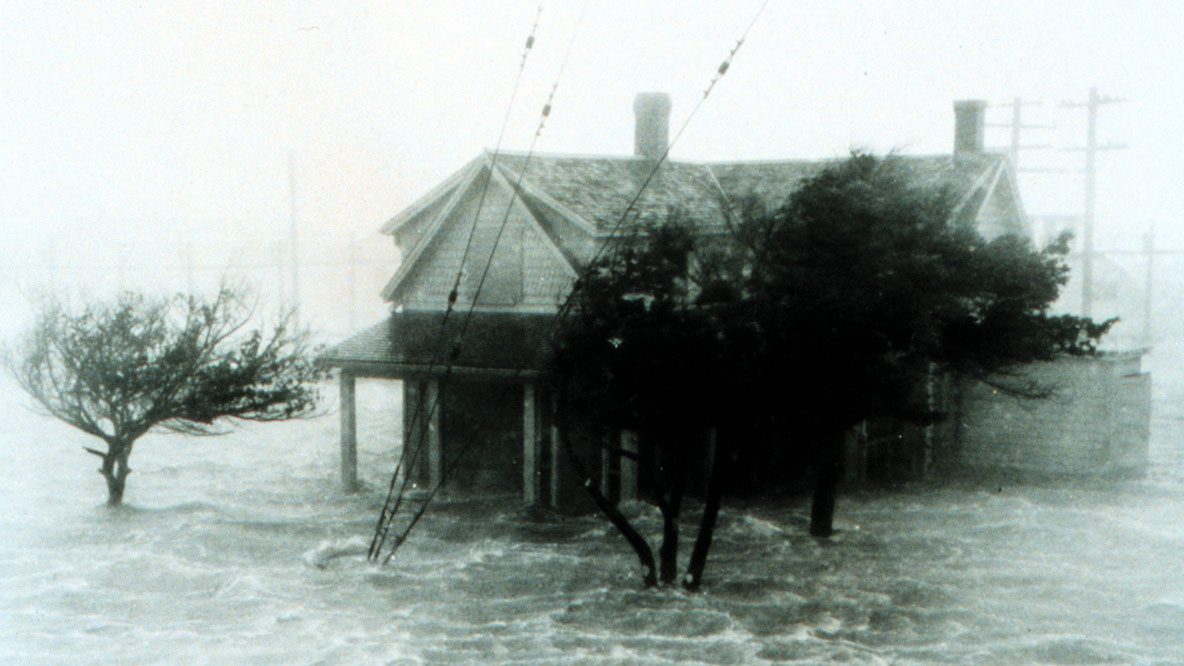
Sea levels could rise by 3 feet or more by the end of the century. Such rises would cause storm surges to travel farther inland, threatening buildings that once would have been a safe distance from the shore.(Courtesy of National Oceanic and Atmospheric Administration)
Is sea level rise affecting climate change?
Sea level rise doesn’t directly impact climate change, but the factors that drive rising seas can accelerate it. Cascading impacts such as these are called feedbacks. The case of sea level rise and melting ice is a positive feedback because this cycle speeds warming; negative feedbacks that slow warming exist too.
The ice-albedo feedback loop is one of these strong positive feedbacks. Albedo is a measure of the reflectivity of the Earth's surface. Ice and other light-colored surfaces have a high albedo because they reflect more heat from the sun. Darker surfaces such as land and the open ocean absorb more solar radiation.
Increasing temperatures cause the ocean to warm and seawater to expand; these rising, warmer waters hasten the melting of sea ice and erosion of coastal ice shelves. Bright white ice reflects more than half of the sun’s energy, so it stays cooler. But when the ice melts, the darker surface left behind absorbs more heat energy from the sun, causing further warming of the ocean and the planet and accelerating ice loss.
The Arctic is especially susceptible to this type of positive ice-albedo feedback loop. Diminishing sea ice over the Arctic Ocean is causing the region to warm twice as quickly as the global average due in part to this vicious cycle.
What are scientists doing to understand how sea level is rising?
Today’s seas are rising far faster over a much shorter period, driven by Earth’s rapid warming. They will continue to rise as the planet warms, but how much and how fast remains somewhat uncertain.
Global sea levels rose an average of 5.9 inches during the twentieth century. Sea levels are now rising at an accelerating rate of .13 inches a year, nearly twice as fast. If global warming is limited to an additional 2°C, scientists project seas could rise an additional one to two feet worldwide by 2100. If warming surpasses 2°C, actual sea level rise could be much higher than this estimate.
Even if even carbon emissions drop to zero today, sea levels will keep rising due to Earth’s hotter temperatures and the ocean’s heat content. The ocean soaks up more than 90 percent of the heat trapped in the atmosphere by carbon emissions, and it will continue to absorb excess heat for centuries.
It remains challenging to forecast where and how much sea level may rise, but scientists are continually refining their predictions. Ultimately, how much ice sheets melt and raise sea levels in the future depends on our ability to reduce carbon emissions and slow rates of global warming.
Scientists are working to determine how glaciers and ice sheets, especially those covering Greenland and Antarctica, will respond to a hotter planet and interact with a warmer ocean during this century. If ice sheets melt faster over the coming century, sea level may rise quicker and higher than models currently predict.
For this reason, more research and continually refined sea level rise predictions are crucial to our ability to adapt and build resilience to rising seas.
Buis, Alan. Sea Level 101, Part Two: All Sea Level is ‘Local.' NASA’s Jet Propulsion Laboratory. https://climate.nasa.gov/blog/3002/sea-level-101-part-two-all-sea-level-is-local/. July 14, 2020.
Dusto, Amy. Reading between the tides: 200 years of measuring global sea level. NOAA: Climate.gov. https://www.climate.gov/news-features/climate-tech/reading-between-tides-200-years-measuring-global-sea-level. August 4, 2014.
IPCC. Special Report: Global Warming of 1.5°C. https://www.ipcc.ch/sr15/. Accessed on December 1, 2020.
IPCC. Special Report on the Ocean and Cryosphere in a Changing Climate. https://www.ipcc.ch/srocc/. Accessed on January 31, 2021.
Lindsey, Rebecca. Climate Change: Global Sea Level. NOAA: Climate.gov. https://www.climate.gov/news-features/understanding-climate/climate-change-global-sea-level. January 5, 2021.
Ramsayer, Kate. Emissions Could Add 15 Inches to 2100 Sea Level Rise, NASA-Led Study Finds. NASA. https://www.nasa.gov/feature/goddard/2020/emissions-could-add-15-inches-to-2100-sea-level-rise-nasa-led-study-finds. September 20, 2020.
Siegert, M., et al. Twenty-first century sea-level rise could exceed IPCC projections for strong-warming futures. One Earth, vol. 3 691-703. doi.org/10.1016/j.oneear.2020.11.002.

